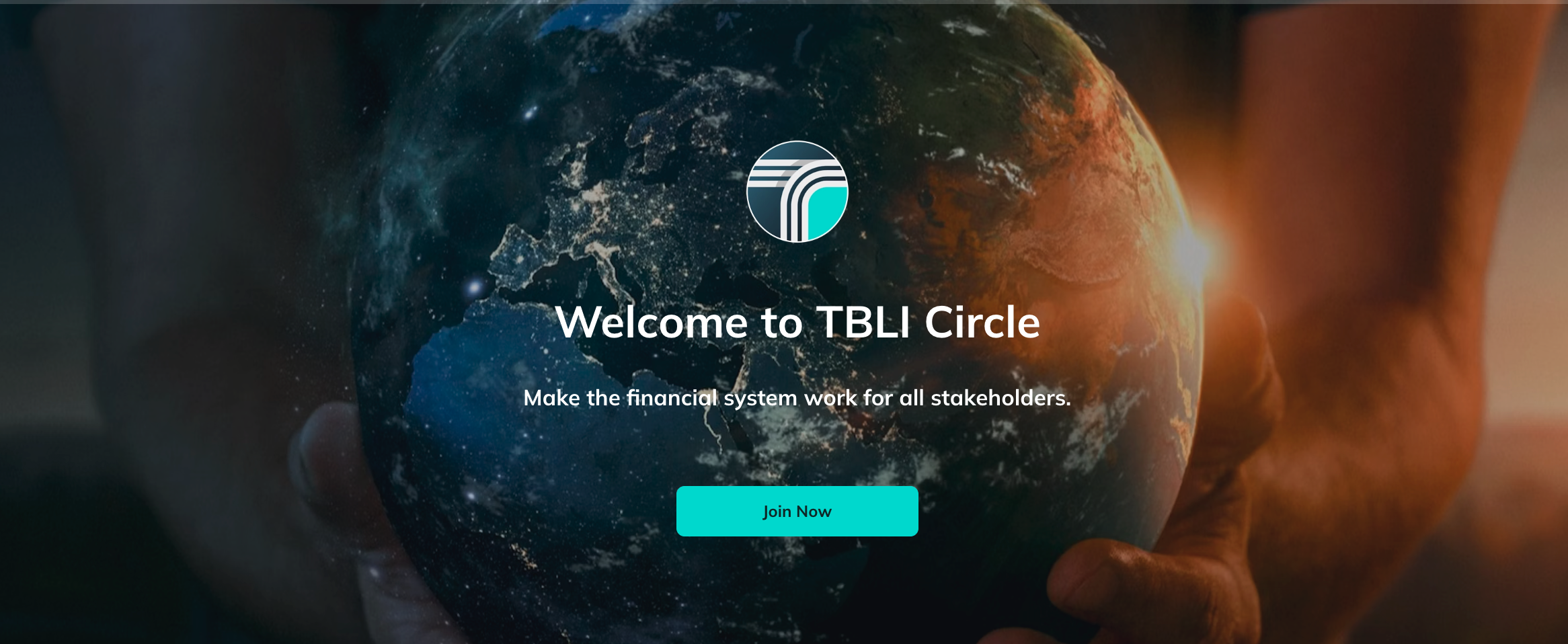Tuesday, July 15th, 2025

Tuesday, July 15th, 2025


In this special episode, we’re joined by Jonathan Maxwell, CEO and founder of Sustainable Development Capital LLP (SDCL), one of the most experienced investors in energy efficiency and low-carbon solutions.
In “How to Finance the Energy Transition,” Jonathan breaks down what it really takes to mobilize capital for the infrastructure of the future—from distributed energy to retrofits, from policy to pipelines. As we enter a decisive year for climate finance in 2025, Jonathan shares hard-won insights into what’s working, what isn’t, and where we go next.
With over two decades of leadership in sustainable investment, he offers a grounded, data-driven view on how to turn energy efficiency into an investable, scalable, and urgent opportunity.

Join TBLI Circle — A Community Where Purpose Leads and Impact Grows
If you're tired of extractive networks, shallow conversations, or “impact” in name only, TBLI Circle is your antidote.
This is not just another platform. It’s a curated circle of professionals who believe finance should serve all stakeholders, not just shareholders.
Whether you’re in transition, seeking deeper alignment, or ready to collaborate on work that truly matters, TBLI Circle gives you something rare:
💬 Real relationships.
🌍 Shared values.
🤝 Trusted connections.
⚡ Momentum for your mission.
No ego. No greenwashing. Just people who care.
If you’ve been searching for the right room — this is it.

Why TBLI Capital Connect?
✅ Access to a curated network of high-net-worth investors and venture capitalists
✅ Tailored matchmaking to align you with the right funding partners
✅ Streamlined process to fast-track your fundraising goals
✅ Different tiers of service, offering you the most suitable service according to your budget.
More details here
Would you like to book a call to discuss in detail? click here
16:00-17:30 CET
💬 Speed networking with values-aligned peers. Our matchmaking system connects you.
No fluff. No travel. Just real, purpose-driven conversations. Limited space — join early!
📅 Last Friday @ 16:00 CET
Sign up here

Let me tell you something that's going to make a lot of people uncomfortable at their next country club meeting or Sand Hill Road coffee chat. The venture capital industry has a massive, glaring, embarrassing problem, and it's time someone said it without the usual corporate-speak bullshit.
Women get jack shit for funding.
Not "less funding" or "challenging funding environments" or whatever sanitized language we use to make everyone feel better. They get practically nothing. In 2023, female-founded companies received a whopping 2.1% of all venture capital funding. Two point one percent. That's not a typo—that's a travesty.
But here's where it gets really interesting: when you look at female-led VC firms, the numbers are even more pathetic. These firms manage less than 3% of total assets under management in the industry. So not only are women not getting funded, but the women who do make it to the other side of the table are getting starved of resources too.
Let's do some basic arithmetic that apparently escaped the Harvard MBAs running these firms:
So if you're a rational investor focused on returns, you'd be throwing money at female founders faster than a kid chasing an ice cream truck. But that's not happening. Why? Because this industry isn't actually about merit or returns—it's about comfort zones and pattern matching.
VCs love to talk about "pattern matching"—looking for founders who fit successful profiles. But let's be honest about what that really means: they're looking for people who look like them, talk like them, and went to the same schools as them.
It's the ultimate lazy investor strategy. Instead of actually doing the work to evaluate business fundamentals, market opportunity, and execution capability, they just ask themselves: "Does this person remind me of Mark Zuckerberg?"
Here's the problem: Mark Zuckerberg was a statistical anomaly, not a pattern. Betting your entire investment thesis on recreating lightning in a bottle is about as smart as buying lottery tickets for your retirement fund.
I've heard every excuse in the book:
"Women don't ask for enough money." Really? Maybe because they've been conditioned by years of being told they're "too aggressive" when they negotiate?
"The pipeline isn't there." Bullshit. The pipeline is there—you're just not looking hard enough because you're too busy taking meetings with the same recycled entrepreneurs from your Stanford alumni network.
"Women are more risk-averse." This one's my favorite. The same industry that funded Theranos, WeWork, and countless other disasters is worried about women being too conservative with capital allocation?
This isn't just about individual bias—though there's plenty of that. It's about systemic structures that perpetuate inequality:
Investment committees that look like a 1950s board meeting. Due diligence processes that favor aggressive self-promotion over substance. Networks that operate like exclusive fraternities where access depends on who you know, not what you know.
The result? A massive market inefficiency where superior entrepreneurs are systematically excluded from capital allocation decisions.
While VCs are busy funding the 47th food delivery app created by a 23-year-old Stanford dropout, they're missing massive opportunities. Companies founded by women are more likely to:
But hey, why invest in proven performance when you can throw money at another "Uber for X" company? Or better yet, let's talk about Climeworks—the darling of climate tech that's raised over $1 billion to build machines that literally produce more CO2 than they capture. Yes, you read that right. The construction, transportation, and operation of their facilities generate more carbon dioxide than their fancy machines can suck out of the air. It's like funding a company that loses money on every sale but makes up for it in volume.
Meanwhile, female entrepreneurs with actual solutions to climate change, healthcare, and education can't get a meeting. The irony is so thick you could cut it with a venture term sheet.
The solution isn't more unconscious bias training or diversity workshops. Those are feel-good measures that change nothing. What we need is:
Mandate transparency. Publish funding data by gender, race, and background. Let LPs see exactly where their money is going.
Change the incentive structure. Tie GP compensation to diversity metrics, not just financial returns.
Expand the decision-making pool. Stop letting the same five guys make all the investment decisions.
Question the fundamentals. Maybe the problem isn't that women don't fit the pattern—maybe the pattern is wrong.
The venture capital industry likes to think of itself as a meritocracy that funds the best ideas and most capable entrepreneurs. The data says otherwise. It's a closed system that systematically excludes half the population from meaningful capital allocation.
This isn't about being politically correct or checking boxes. It's about basic competence. Any industry that ignores 50% of the talent pool while generating inferior returns is fundamentally broken.
The question isn't whether this will change—demographic trends and LP pressure will force change eventually. The question is whether current VCs will adapt or get left behind by firms that actually know how to identify and fund talent wherever it comes from.
The uncomfortable truth is that the emperor has no clothes, and everyone can see it. The only question is who's going to be brave enough to say it out loud.
TBLI will be launching trustvc.org shortly to give full transparency to the VC and PE Space. Please post reviews.
Source

Up to five areas could enter drought status and more hosepipe bans expected after three heatwaves and lack of rain

According to the agency’s data, installed capacity from variable renewables, such as wind and solar, grew by a staggering 23.3% year-over-year. When you include other sources such as hydropower, geothermal, marine energy, and bioenergy, the overall growth in renewable capacity still comes in at an impressive 15.1%. That’s faster than the pace observed in the prior year, an encouraging sign for clean energy advocates.
Yet, the global renewable boom remains highly uneven. The lion’s share of new capacity is still emerging from Asia. Of the record 582 gigawatts added globally between 2023 and 2024, a hefty 71% came from the region. China alone was responsible for nearly 400 gigawatts, maintaining its position as the world leader by a wide margin. India added almost 25 gigawatts, followed by Japan with around 4 gigawatts and South Korea with 3 gigawatts.
Europe and North America contributed a more modest portion—12.3% and 7.8%, respectively, of the new additions. IRENA is urging governments and institutions to increase their investment in renewable energy in underserved regions, such as Africa, Eurasia, Central America, and the Caribbean. A recent report from the United Nations Development Programme, in collaboration with Octopus Energy and the Pardee Institute, suggests that an accelerated transition to renewable energy, combined with innovative poverty-alleviation policies, could generate $20 trillion in energy cost savings and boost global GDP by 21% by 2060.
As for 2030 targets, there’s still a lot of ground to cover.
At the COP28 summit in Dubai last year, more than 100 countries pledged to triple global renewable energy generation capacity by the end of the decade. That goal would require reaching 11.2 terawatts of energy. Based on current trends, IRENA projects the world will reach around 10.3 terawatts by 2030 if the current annual growth rate continues unchanged.
To achieve the 2030 ambition, the world would need to increase renewable capacity by 16.6% annually from now through the end of the decade. That’s no small feat—but it’s not out of reach.
However, doing so will take serious effort. African nations need to see a rapid scale-up of development. Meanwhile, in more mature markets such as North America and Europe, there’s a pressing need to address long-standing bottlenecks—especially in planning, permitting, grid capacity, supply chains, and workforce training.
Source

Under Trump, climate denial has given way to something even more dangerous: climate erasure.
For 25 years, a group of the country’s top experts has been fastidiously tracking the ways that climate change threatens every part of the United States. Their findings informed the National Climate Assessments, a series of congressionally mandated reports released every four years that translated the science into accessible warnings for policymakers and the public. But that work came to a halt this spring when the Trump administration abruptly dismissed all 400 experts working on the next edition. Then, on June 30, all of the past reports vanished too, along with the federal website they lived on.
A lot of information about the changing climate has disappeared under President Donald Trump’s second term, but the erasure of the National Climate Assessments is “by far the biggest loss we’ve seen,” said Gretchen Gehrke, who monitors federal websites with the Environmental Data and Governance Initiative. The National Climate Assessments were one of the most approachable resources that broke down how climate change will affect the places people care about, she said. The reports were also used by a wide swath of stakeholders — policymakers, farmers, businesses — to guide their decisions about the future. While the reports have been archived elsewhere, they’re no longer as easy to access. And it’s unclear what, if anything, will happen to the report that was planned for 2027 or 2028, which already existed in draft form.
So why did the reports survive Trump’s first term, but not his second? You could view their disappearance in a few different ways, experts said — as a flex of executive power, an escalation in the culture war over climate change, or a strategic attempt to erase the scientific foundation for climate policy. “If you suppress information and data, then you don’t have the evidence you need to be able to create regulations, strengthen regulations, and even to combat the repeal of regulations,” Gehrke said.
This isn’t climate denial in the traditional sense. The days of loudly debating the science have mostly given way to something quieter and more insidious: a campaign to withhold the raw information itself. “I don’t know if we’re living in climate denial anymore,” said Leah Aronowsky, a science historian at Columbia Climate School. “We have this new front of denial by erasure.”
By cutting funding for research and withholding crucial data, the Trump administration is making it harder to know exactly how the planet is changing. In April, the administration pulled nearly $4 million in funding from a Princeton program to improve computer models predicting changes in the oceans and atmosphere, claiming the work created “climate anxiety” among young people. That same month, the Environmental Protection Agency failed to submit its annual report to the United Nations detailing the country’s greenhouse gas emissions. In May, the National Oceanic and Atmospheric Administration ended its 45-year tradition of tracking billion-dollar weather disasters. Trump also hopes to shut down the Mauna Loa laboratory in Hawaiʻi, which has measured the steady rise in atmospheric levels of carbon dioxide since the 1950s — the first data to definitively show humans were changing the climate.
“This kind of wholesale suppression of an entire field of federally sponsored research, to my knowledge, is historically unprecedented,” Aronowsky said.
In a response to a request for comment, a NASA spokesperson said that it has “no legal obligations to host globalchange.gov’s data,” referring to the site that hosted the National Climate Assessments, adding that the U.S. Global Change Research Program had already “met its statutory requirements by presenting its reports to Congress.” The EPA directed Grist to a webpage containing past greenhouse gas emissions reports, as well as a version of what was supposed to be this year’s report obtained by the Environmental Defense Fund. However, the agency confirmed that the latest data has not been officially released. The White House declined to comment, and the National Oceanic and Atmospheric Administration did not respond.
Last year, a leaked training video from Project 2025 — the policy roadmap organized by The Heritage Foundation, a conservative think tank — showed a former Trump official declaring that political appointees would have to “eradicate climate change references from absolutely everywhere.” The strategy appears to be designed to boost the fossil fuel industry at a time when clean energy has become competitive and the reality of climate change harder to dismiss, as floods, fires, and heat waves have become perceptibly worse. “We will drill, baby, drill,” Trump said in his inauguration speech in January.
Read full article

Campaigners condemn ‘troubling’ move that follows departure of six of largest US banks after Trump’s election